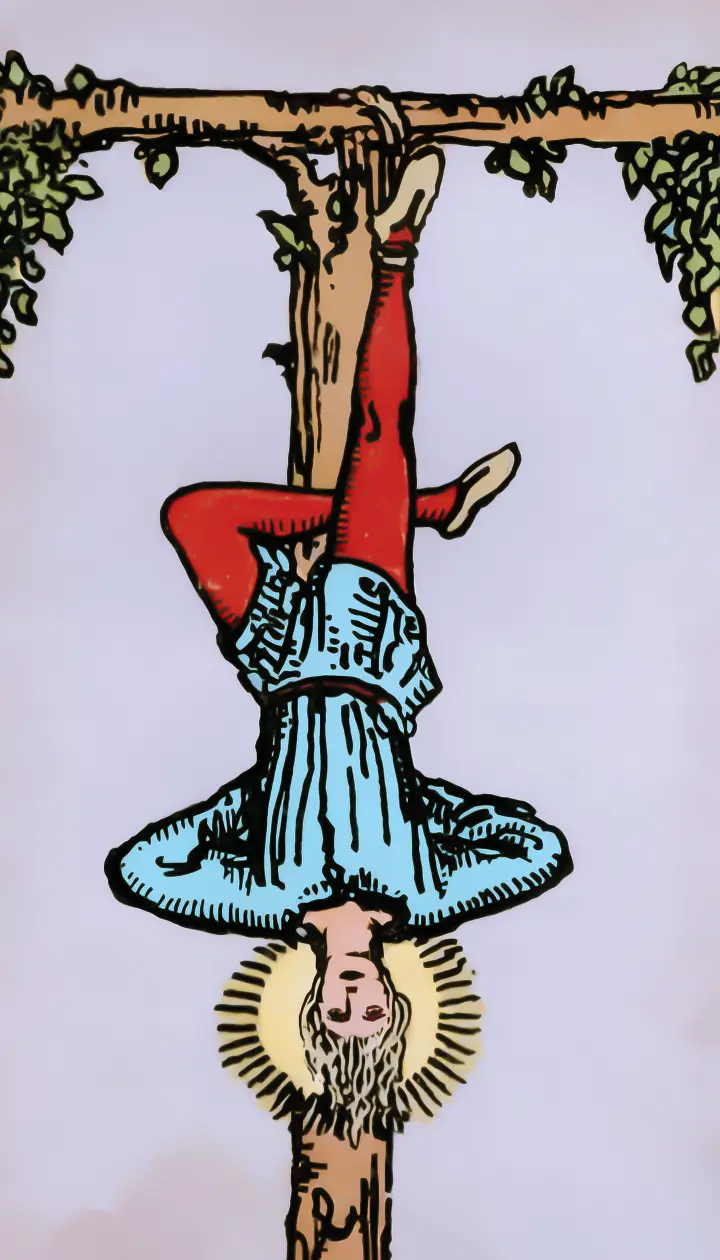
The Hanged Man Card Fully Explained
By DivinationToolThe Hanged Man symbolizes self-sacrifice, surrender, and spiritual awakening. This article explores the upright and reversed meanings of The Hanged Man card, emphasizing the wisdom that comes through waiting and introspection.
The Hanged Man Card Fully Explained | Sacrifice, Stillness, and Spiritual Insight
Associated Information
Related Keywords: Compassion, Illusion, and Sacrifice Corresponding Astrology: Neptune Element: Water
Key Words
Spiritual level, mindset of sacrifice and dedication, undergoing training, focused and invested, wisdom born from sacrifice, divine messages from contemplation, wise, perceptive, cautious, prophetic, intuitive power, awakening in progress.
Upright Interpretation
Willing sacrifice and dedication, seeking the path through self-discipline, unconventional, going against the norm, financial loss, focused on an ideal, firm faith, long-term contemplation, a need to settle and reflect, an inevitable stage before success.
Reversed Interpretation
Spiritual torment, unwilling sacrifice, significant losses, being taken advantage of, severe financial leakage, dissatisfaction, coldness, selfishness, giving with expectations of return, escaping bindings and constraints, viewing the world through a distorted lens.
Two common interpretations of The Hanged Man reversed: ① Liberation from the tree — possibly indicating that the goal has been achieved. The transition from upright to reversed may symbolize resolution. In interpersonal terms, it implies turning inward and no longer giving endlessly to others. ② On the flip side, it can suggest arrogance and refusal to accept one’s fate — a resistance to paying back what destiny demands. The fading halo of wisdom around the head implies a loss of insight, and acting before the time is ripe may lead to futile efforts.
Detailed Meaning of the Card
The Hanged Man represents willing sacrifice and selfless dedication.
Among the 22 Major Arcana, The Hanged Man is perhaps the most grueling — deeply tied to physical and spiritual discipline. One leg is bound or suspended from a tree, with the whole body’s weight and balance supported by willpower — a symbol of physical pain and endurance. The other leg crosses lightly in a relaxed pose — a playful gesture of the spirit undergoing trial. No one knows whether The Hanged Man chose this path or was forced into it. Is he suffering physically, or spiritually ascending? Only The Hanged Man himself knows the answer.
Card XII, The Hanged Man, mirrors and contrasts with Card XXI, The World. The Hanged Man is in the midst of training, marked by sacrifice; the goddess in The World card has completed her journey and enjoys fulfillment.
The composition of this card is rather unusual. At first glance, one might wonder if it’s printed upside down. Indeed, The Hanged Man sees the world from an inverted perspective. His vision and understanding differ from the norm. He might be hanging there voluntarily for a greater vision, or perhaps as punishment — repaying his own karmic debts, or even those of others, playing the role of a scapegoat.
Due to impeded action, this card represents waiting — waiting for the right moment. What’s lost is present freedom. Yet, look closely at The Hanged Man’s face — there’s no trace of pain, which shows he accepts it all willingly. He is someone who endures with patience and without complaint. In relationships, this could indicate bearing more responsibility or even enduring grievance to maintain the connection — sometimes at the cost of neglecting one’s own feelings. In terms of material matters, The Hanged Man highlights the idea of giving without guaranteed return — the outcome may be fruitful, or it may end in nothing.
Although The Hanged Man appears trapped by fate, suspended from the tree and bound to stillness, he liberates himself spiritually by viewing things from a new angle, thereby transcending the limitations of destiny.
The card that comes before The Hanged Man is Justice, and before that, the Wheel of Fortune. The Hanged Man thus follows the role of one being judged. This trio represents karmic repayment: the cosmic principle that gain must be balanced by loss. If you have gained something through improper means or unearned merit, fate demands repayment. The Hanged Man repays with suffering.
From another angle, some individuals hesitate in the role of Justice — unable to choose, because every option has both light and shadow. Each choice has strengths but also fears and flaws. The inability to accept this duality causes indecision. But not choosing is also a choice — one that forfeits all other options and still requires a price to be paid. For those who hesitate at the crossroads, perhaps we need to help them see that The Hanged Man’s state is part of life — an essential step on the journey, not something to avoid. It should be transformed into responsibility and the realization of life’s deeper meaning.
The Hanged Man’s role is one of willing acceptance. Even in suffering, there is no complaint — for he has made a promise to himself, and still holds hope for the future. His current burden is voluntary, chosen in light of a greater plan. Life is not only about the results — what is gained or lost — but also about the effort shown and the personal value demonstrated along the way. The pain and darkness are part of what makes life profound and complete.